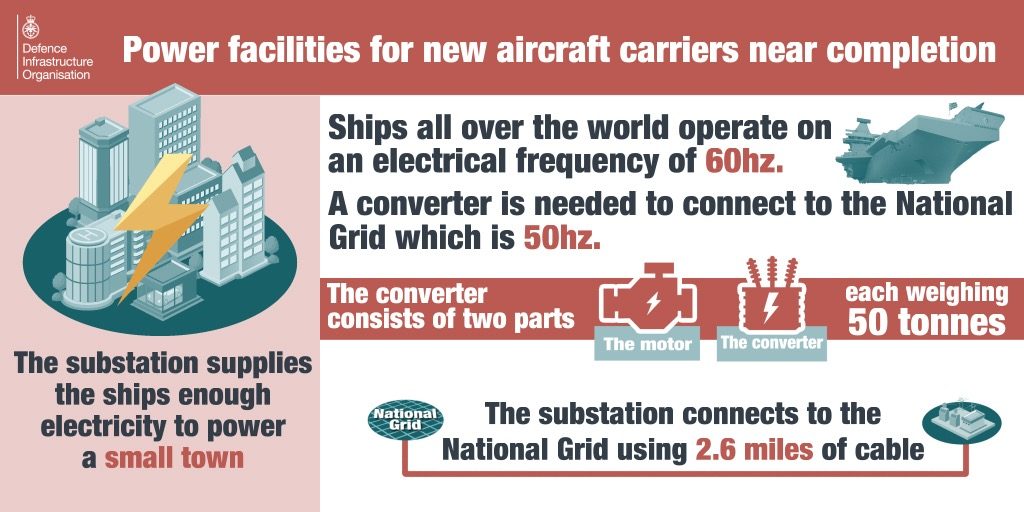Hi, I’m Philip Wise, DIO’s Principal Project Manager for the major infrastructure investment currently taking place at HMNB Portsmouth to ready the base for the arrival of the Royal Navy’s Queen Elizabeth Carriers, which will be based in the city.

Supporting the Carriers
The first ship, HMS Queen Elizabeth, will become the Navy’s flagship and is due to arrive at HMNB Portsmouth next year. HMS Queen Elizabeth and her sister ship, HMS Prince of Wales, will be the biggest ships the Royal Navy has ever operated and will carry F-35(B) fighter jets.
![HMS Queen Elizabeth [CPOA( Phot) Thomas Tam McDonald, Crown Copyright/MOD2014]](https://insideDIO.blog.gov.uk/wp-content/uploads/sites/29/2015/02/20140704-HMS-Queen-Elizabeth-after-naming-ceremony-CPOAPhot-Thomas-Tam-McDonald-1024x687.jpg)
I’ve blogged about the project in the past, but we’ve just taken a major step forward on the power supply so I thought it was time for an update.
Frequency Converter
We’ve just taken delivery of a frequency converter, which is a vital part of the electrical equipment to power the aircraft carriers and has been purpose-built over the last 12 months.
![The frequency converter in situ. [Crown Copyright/MOD2016]](https://insideDIO.blog.gov.uk/wp-content/uploads/sites/29/2016/08/Frequency-Converter-1024x683.jpg)
Electrical Power for Naval Power
All in all, the substation supplies enough electricity to power a small town. The building has been finished for several months now and our contractors VolkerStevin are working hard to finish fitting it out internally.
![The new substation building. [Crown Copyright/MOD2016]](https://insideDIO.blog.gov.uk/wp-content/uploads/sites/29/2016/08/IMG_7396-1024x683.jpg)
Once the electricity reaches the substation and has been converted to 60Hz, we still have to get it to the ships. For the final connection from jetty to vessel we need a hydraulic boom as such a large cable is unable to support its own weigh over the 20 metres between ship and shore. The boom is able to cope with ship and tide movements to ensure the power supply is protected and is telescopic so that it can be retracted when the carrier is at sea. Our boom is being constructed in Italy and will be delivered in early 2017, signalling completion of the works as a whole.
The substation and power supply are vital for HMS Queen Elizabeth and HMS Prince of Wales so I’m pleased to be involved. Supporting the country’s new aircraft carriers is a good reason to come to work in the morning!
